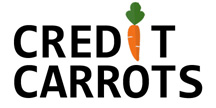Money in the modern economy has become a complex topic that few people understand. We’re going to take a look at how our monetary system evolved from the gold standard to the fiat currency system in operation today (where governments and banks can create money out of thin air).
Prepare to be shocked at how money is created and destroyed in today’s economy.
The Gold Standard

Prior to the 1970’s money was, in a physical sense, very real as it was backed by actual gold. Back in those days, you could take money to the government and exchange your bill for gold. Every single US Dollar (USD) was backed by physical gold.
In 1971, the USA ended the gold standard and things changed drastically. The answer to the question “what is money” began to change.
The USA was not alone, and many countries went off the gold standard. What were the reasons for this?
The main reason is that the gold standard limited the money supply since you needed gold for every dollar you have in circulation. If you wanted to create a dollar, then you better have the equivalent amount of gold in the vault.
Another, perhaps more important, reason is that the gold standard caused some issues when countries trade with each other.
For example, if America buys a whole bunch of goods from Mexico, we are mostly paying them in USD. When the gold standard was active, the Mexican government could then take these dollars and ask the US Federal Reserve for the equivalent amount in gold in return.
This was a problem since no country really likes to have gold flow out of their vault, and into another country’s reserves. Rather, countries would prefer that whoever is holding their currency to invest that currency in their country. Removing the gold standard was a great way to encourage countries to do this.
Once the gold standard was removed in 1971, federal governments and banks could create money out of thin air since it’s no longer backed by anything physical. With a few strokes of the keyboard, unlimited amounts of money can be created. Our currency is now backed only by the faith and trust we have in the government.
How Governments and Banks Control money

Today, money is not very physical. It’s digits in a computer, it’s a number you see when you open your banking app, it’s what you can transfer to another person or business with the tap of a credit card. This is what we call a fiat currency – money that is not backed by a physical commodity.
How does the federal government create money? They can do it by simply spending. Their ability to create money is unlimited as the federal reserve has often stated. Since money is no longer backed by anything physical, the federal government can literally change the numbers in their computer and create however much money they need.
Anytime the federal government issues a social security check, anytime they pay a worker, anytime they bail out companies they can just change the numbers in their computers and money is created.
How can federal governments get away with this? One of the main reasons is taxes.
Let’s think about it for a second. Are you allowed to pay your taxes in any currency other than USD in America? The answer is a firm no. This is how the government forces you to use their currency for living in their country. Furthermore, government taxation essentially removes money from public circulation. Government spending creates money, and taxation destroys money. It’s a delicate balance that must be maintained in order for the economy to be healthy
When it comes to banks, they create money whenever a loan is made. Most people think that banks need to have the money they’re loaning out in cash reserves, but shockingly that is not the case. Banks do not go to their big vault and take out money when they give a loan to you.
When they make a loan, they simply change the numbers they have in their computer and poof – money is created. When someone pays back a loan, then money is essentially destroyed as it’s taken out of public circulation.
There are certainly constraints to how much money governments and banks can (or should) create. If a government creates so much money that it causes damaging inflation, then that’s not a good situation because everyone’s hard-earned money is now suddenly worth less.
With banks, they are constrained by government regulations when it comes to how much money they can loan out. When it comes down to it, the buck stops with the federal government when it comes to how much money is in circulation.
Why does money have value?

So it seems like money can be created very easily by governments or banks. This begs the question of why money is valuable if it can be generated with a few keystrokes on a computer.
The reason money has value is trust. We trust that the money we make and save will be able to buy us things. We trust that at some point, we will be able to exchange our money for something of value like food, a car, or a house.
If you want to see what happens to a currency when people lose trust in it, then check out what happened to Venezuela in 2016 or Germany in 1922.
If you’re looking for more detailed information on how money works in our modern economy, then check out this paper by the Bank of England: Money Creation in the Modern Economy.
We are not financial advisors, and no content on this site should not be taken as financial advice. No guarantee can be made if you invest based on the information provided on this blog. We make no warranty of any kind regarding the blog and/or any content, data, materials, information, products or services provided on the blog.












Article Comments